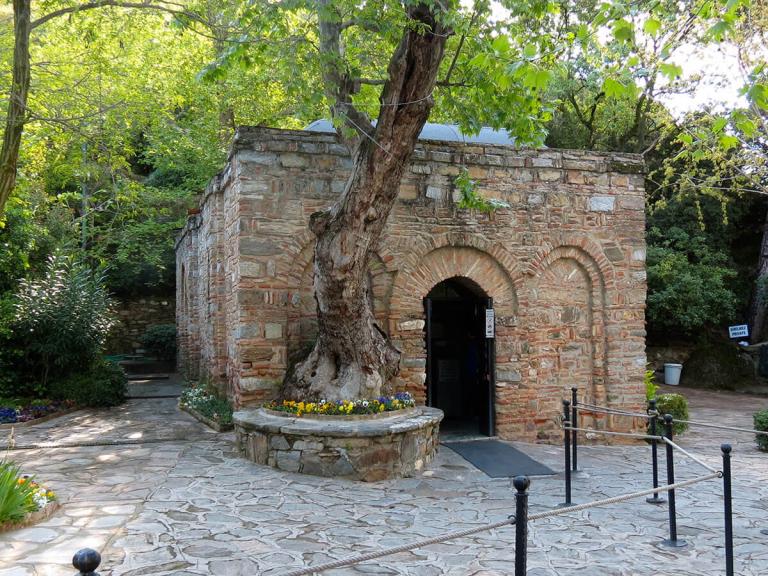
In the mountains of Turkey, a small little shack rests that bears major importance to Christians and Muslims alike. The little stone house sits on Mount Nightingale in modern-day Turkey, outside the ruins of the ancient town of Ephesus. A fountain and a wishing wall lie just below the little shack, where pilgrims tuck away their wishes and take some of the water, which is believed to have healing properties. Called “Meryemana Evi” in Turkish, meaning “the House of Mother Mary,” the site is known officially as the Ephesus House of Mary. According to the book of John, Jesus gave the care of his mother, Mary, to the disciple John, “the disciple whom Jesus loved,” according to John 19:25-27. According to the book of Acts, John was tasked with bringing the Gospel to Asia Minor, which is now Turkey. Many believe he traveled to Ephesus, taking Mary with him. Ephesus is the site of John’s tomb, where he returned after his exile to the Island of Patmos. It is also the site of the first basilica to be dedicated to Mary, enhancing the Turkish government’s claims that the site was indeed the place where Mary spent her last days. Greek inhabitants in the area had also named the site “Panaya Kapulu,” or “the Doorway to the Virgin.”
In 1881 a French priest attempted to confirm the visions of Catherine Emmerich, a German nun who supposedly had visions of Mary. Her visions were written down by a man named Clemens Brentano and were published in a book, The Life of the Blessed Virgin Mary, published in 1852. There are debates on whether or not Brentano fabricated most of the visions he wrote down, but regardless, the priest, Father Julien Gouyet, found the house using Emmerich’s description. However, no one believed him. In 1891, a French nun by the name of Marie de Mandat-Grancey convinced two Jesuit priests to look for the site using the very same book and the site was rediscovered. Marie de Mandat-Grancey bought the property and established the site as a holy site for pilgrims. The building was restored several times, with the last restoration taking place in 1951.
The site is also significant to Muslims in the area, as they consider Jesus one of Allah’s greatest prophets. A room in the house designated as the “Quran Room” is thought to be Mary’s bedroom and is decorated with verses from the Quran as well as Islamic symbols. The rest of the site bears Christian symbols. There were also rumors that a coffin with Mary’s remains was uncovered in the area and was briefly visible in the 1950s. However, that has not been confirmed. Speculation continues to surround the authenticity of the site; however, it remains an important part of religious history and inspires many pilgrims to make the journey.


